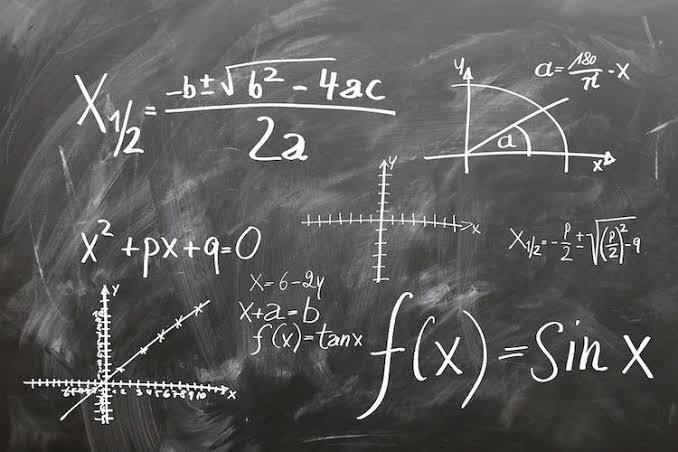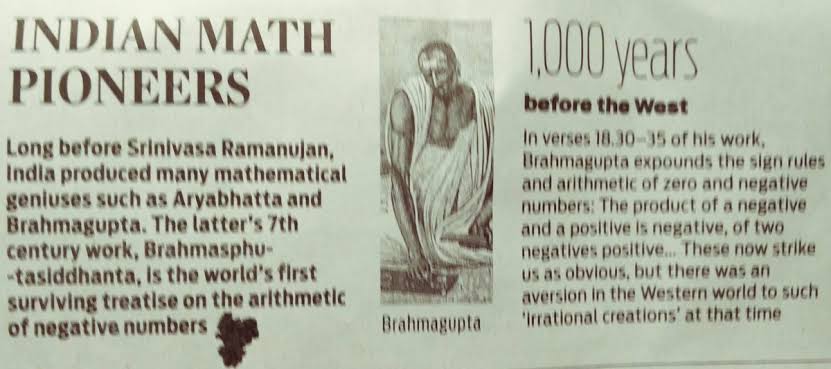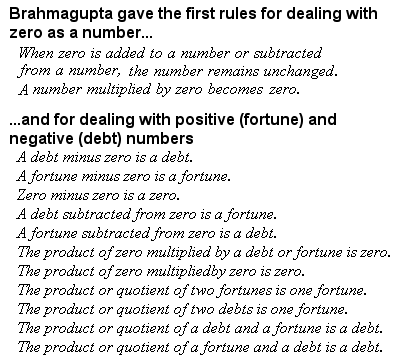Ancient Indian Mathematics is different from Western Mathematics
2x2 in western Maths is adding 2 two times
2x2 in Ancient Maths is adding 2 two times to Zero
Now many will say what& #39;s the difference but it is https://abs.twimg.com/emoji/v2/... draggable="false" alt="🧐" title="Gesicht mit Monokel" aria-label="Emoji: Gesicht mit Monokel">
https://abs.twimg.com/emoji/v2/... draggable="false" alt="🧐" title="Gesicht mit Monokel" aria-label="Emoji: Gesicht mit Monokel">
1/n
2x2 in western Maths is adding 2 two times
2x2 in Ancient Maths is adding 2 two times to Zero
Now many will say what& #39;s the difference but it is
1/n
Western copied maths from Indians but could never understand the original concept
Most significant is Zero and it& #39;s uses
Western took zero as only place holder but in Indian Mathematics it was a number
Brahmgupta first to give concepts for uses of Zero and Negative Numbers
2/n
Most significant is Zero and it& #39;s uses
Western took zero as only place holder but in Indian Mathematics it was a number
Brahmgupta first to give concepts for uses of Zero and Negative Numbers
2/n
He defined Zero and Negative Numbers
He was first to say that product of two negative numbers is positive
In western Maths
-5<-1
In Indian Maths
-5>-1
West understood negative numbers as less than zero and lost the originality of concept
3/n
He was first to say that product of two negative numbers is positive
In western Maths
-5<-1
In Indian Maths
-5>-1
West understood negative numbers as less than zero and lost the originality of concept
3/n
But Brahmgupta defined them As example if a protrusion of 1 meter is positive than depth of 1 meter is negative
How a 5 meter depth is less than 1 meter depth
He defined negative numbers as opposite entity of positive number not as numbers less than zero
4/n
How a 5 meter depth is less than 1 meter depth
He defined negative numbers as opposite entity of positive number not as numbers less than zero
4/n
Now you know why product of two negative numbers is a positive
And
Original Concept of calculations with negative numbers
Consider term
(−1)·(−1) + (−1)
It is true that
[a·b + a] = a·[b +1]
In above term
a=(−1) and b=(−1)
(b+1)= 0
and
a·[b +1]=0
5/n
And
Original Concept of calculations with negative numbers
Consider term
(−1)·(−1) + (−1)
It is true that
[a·b + a] = a·[b +1]
In above term
a=(−1) and b=(−1)
(b+1)= 0
and
a·[b +1]=0
5/n
But if
(−1)·(−1) + (−1) = 0
then
(−1)·(−1) = +1
Then in general for a and b positive
(−a)·(−b) = (−1)·(−1)a·b = a·b
6/n
(−1)·(−1) + (−1) = 0
then
(−1)·(−1) = +1
Then in general for a and b positive
(−a)·(−b) = (−1)·(−1)a·b = a·b
6/n
The proper way to think of & #39;−a& #39; is as the additive inverse of & #39;a& #39;
whose sum with & #39;a& #39; gives additive identity zero
So product of additive inverses of a and b is product of a and b
Additive inverse of additive inverse of & #39;a& #39; is & #39;a& #39;
−(−a) is & #39;a& #39;
7/n
whose sum with & #39;a& #39; gives additive identity zero
So product of additive inverses of a and b is product of a and b
Additive inverse of additive inverse of & #39;a& #39; is & #39;a& #39;
−(−a) is & #39;a& #39;
7/n
Furthermore (−a) = (−1)a
Thus −(−a) = (−1)(−1)a
But −(−a) = a
hence (−1)(−1)a=a
and therefore (−1)(−1)=1
8/n
Thus −(−a) = (−1)(−1)a
But −(−a) = a
hence (−1)(−1)a=a
and therefore (−1)(−1)=1
8/n
Multiplicative identity as well additive identity and each element has an additive inverse
Multiplication is distributive over addition
x(y+z)=xy+xz
Product of additive inverses of two elements of with a multiplicative identity is equal to product of elements
(-y)(-z)=yz
9/n
Multiplication is distributive over addition
x(y+z)=xy+xz
Product of additive inverses of two elements of with a multiplicative identity is equal to product of elements
(-y)(-z)=yz
9/n
Let 0 be additive identity
y·0=0
y+y·0=y·1 + y·0 = y(1 + 0) = y·1 = y
Thus for any y
y+y·0=y
which means that y·0 is the same as additive identity 0
Define x=(-y)(-z) + y(-z) + yz
factoring first two terms on right
x = [(-y) + y](-z) + yz
[(-y) + y]=0
0(-z)=0
so x=yz
10/n
y·0=0
y+y·0=y·1 + y·0 = y(1 + 0) = y·1 = y
Thus for any y
y+y·0=y
which means that y·0 is the same as additive identity 0
Define x=(-y)(-z) + y(-z) + yz
factoring first two terms on right
x = [(-y) + y](-z) + yz
[(-y) + y]=0
0(-z)=0
so x=yz
10/n
But the last two terms can be factored
x=(-y)(-z) + y(-z) + yz
x=(-y)(-z) + y[(-z) + z]
[(-z) + z]=0
and y0=0
so
x = (-y)(-z)
Since x=yz and x=(-y)(-z)
(-y)(-z) = yz
Note that this not only covers
(-1)(-1)=1·
But also that
(-1)1=(-1)
and
1(-1)=(-1)
11/n
@Dharma_Yoddhaa
x=(-y)(-z) + y(-z) + yz
x=(-y)(-z) + y[(-z) + z]
[(-z) + z]=0
and y0=0
so
x = (-y)(-z)
Since x=yz and x=(-y)(-z)
(-y)(-z) = yz
Note that this not only covers
(-1)(-1)=1·
But also that
(-1)1=(-1)
and
1(-1)=(-1)
11/n
@Dharma_Yoddhaa

 Read on Twitter
Read on Twitter 1/n" title="Ancient Indian Mathematics is different from Western Mathematics2x2 in western Maths is adding 2 two times2x2 in Ancient Maths is adding 2 two times to ZeroNow many will say what& #39;s the difference but it is https://abs.twimg.com/emoji/v2/... draggable="false" alt="🧐" title="Gesicht mit Monokel" aria-label="Emoji: Gesicht mit Monokel">1/n" class="img-responsive" style="max-width:100%;"/>
1/n" title="Ancient Indian Mathematics is different from Western Mathematics2x2 in western Maths is adding 2 two times2x2 in Ancient Maths is adding 2 two times to ZeroNow many will say what& #39;s the difference but it is https://abs.twimg.com/emoji/v2/... draggable="false" alt="🧐" title="Gesicht mit Monokel" aria-label="Emoji: Gesicht mit Monokel">1/n" class="img-responsive" style="max-width:100%;"/>




